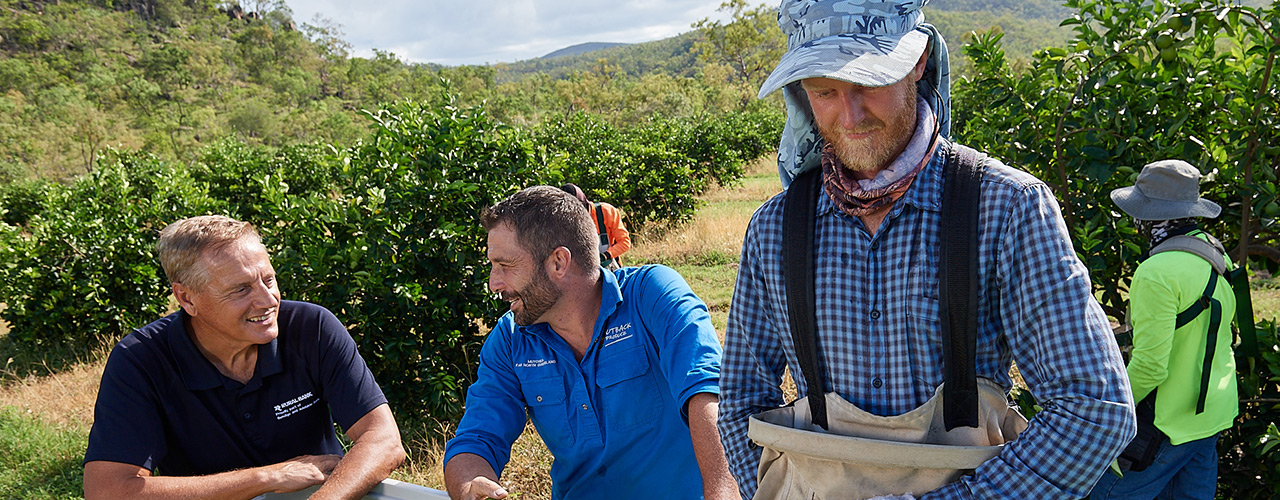Strong winds, heavy rain, water ingress through ceilings, windows and doors and flying debris during extreme weather can cause severe damage to your property. Be sure to be prepared for the rare but inevitable extreme weather events that can impact upon your region.
It’s no secret that Mother Nature is powerful. If a storm or tropical cyclone hits, the combination of heavy rains and destructive winds can cause a wide variety of chaos like floods, flying debris, destruction of infrastructure, and can potentially put lives and safety or family and friends at risk.
For farmers, the impacts of extreme weather, including major floods and tropical cyclones, can include loss of livestock and/or your crops or produce, increased susceptibility of disease to livestock and crops, increased risks of plagues of locusts and mice, damage to roads and fences, and land degradation as a result of ongoing wind and water impacts.
Although the La Nina from last summer is declining, large parts of Australia are still expecting bursts of heavy rainfall at times in the coming months. To help you take action, here are a few ways to get organised and plan for extreme weather before it happens.
Recognise high-risk flood areas
In Australia over one million properties, or about one in 10 homes, have some level of flood risk. While each area has its own risk of flooding, some are higher than others. The most at-risk flood areas across Australia are found in the following local government areas:
- Brisbane, QLD
- Central Coast, NSW
- Clarence Valley, NSW
- Hawkesbury, NSW
- Kempsey, NSW
- Lismore, NSW
- Shoalhaven, NSW
- Townsville, QLD
- Tweed, NSW
- Wollongong, NSW
Even if your area isn’t included in the above list, your property could still be at risk of damage from flooding. Check with your local floodplain management authority to see whether some or all of your property is at risk - you may be surprised. Depending on where you live, the source of the flood risk mapping could be the local council, catchment management authority, water authority, or territory government. You can also search your area via the Australian Flood Risk Information Portal.
Properly plan and prepare
Like any situation, if you’re prepared you’ll be better equipped to handle severe weather when and if it happens. You can avoid some of the most common types of damage from storms, floods and tropical cyclones with proper planning, high quality building practices, using resilient building materials and ongoing maintenance.
Before a storm, flood or tropical cyclone season, be sure to:
- Check and fix any damaged fences.
- Secure any property that might become airborne in extreme winds and cause damage, like bins, gas bottles, outdoor equipment and unsecured piles of timber or cladding.
- Ensure any chemicals or poisons are safely stored away, above ground level in secure waterproof cabinets.
- Stock up on clean water.
- Store your valuables in a high, secure place.
- Move animals and livestock to safety on higher ground if a warning of a flood or tropical cyclone has been issued for your property.
During a storm, flood or tropical cyclone, be sure to:
- Stay indoors in a safe place away from windows.
- If outdoors, seek shelter away from water courses, trees and power lines.
- If driving, put your hazard lights on and pull over in a safe place away from water courses, overhanging trees and power lines. If there is a tropical cyclone approaching, ensure your vehicle is housed in a strong garage.
- Always follow the advice of emergency services.
After a storm, flood or tropical cyclone, be sure to:
- Check your house and property for damage, making thorough documentation (for example, taking photos) [BB1] in case you need to make an insurance claim.
- Check your neighbours are safe.
- Keep away from water courses, trees and downed power lines.
- Ensure animals and livestock have access to clean water and food.
Practice an emergency safety plan
Storms, floods and tropical cyclones can occur quickly with little warning, which means there’s often not much time to get organised. That’s why it’s important to have an emergency safety plan in place – even if you live in an area that’s not frequently affected by extreme weather events.
To help households and businesses plan for flooding, the NSW SES has developed an Emergency Plan. Complete, share and practice your plan with your family, and neighbours - practice relocating animals to safer paddocks during the year as this will help things run more smoothly in the event of an emergency.
Insurance coverage - what to look for
As a farm owner, you should consider your objectives, financial situation and needs to help decide whether you have appropriate insurance in place. With your personal circumstances in mind, below is a checklist that can help you safeguard your property and livelihood:
- Check your insurance policy to see if you have appropriate coverage for the assets on your property, including vehicles, machinery, boats and caravans, crops and livestock.
- Check that your policy is up-to-date and includes cover that is suitable for you. For example, consider whether you need cover for flood and other types of water damage such as from storm surge if your property backs onto the ocean. Each policy may have slightly different wording and cover, so if you’re unsure, feel free to contact your local WFI Area Manager or call 1300 934 934 to discuss your insurance needs.
- ‘Removal of debris’ cover can cover the clean-up costs after a flood. Consider whether this suits your needs.
- Temporary accommodation cover in a policy, if included, can provide you access to temporary accommodation in the event your home is unlivable - this may not be included in basic cover.
- If your farm or property is your business, a flood or tropical cyclone can interrupt your business. You can check to see if you’re covered for the cost of interruption to your income by reading the relevant Product Disclosure Statement or checking in with your insurance broker or insurer.
- Ensure your property sum insured is up-to-date and accurate.
Above all, in the event of a storm, flood or cyclone, your main priority is to keep yourself, your family and your animals safe. Always take all the appropriate safety precautions, listen to the instructions and advice of your local emergency services – including whether you should stay or leave your property – but most importantly, never attempt to drive through floodwaters.
About Bruce
Bruce is the Principal Research Analyst for Climate at Insurance Australia Group (IAG), Australia’s largest general insurer and operator of some of Australia’s leading insurance brands including WFI and NRMA insurance. With over 40 years’ experience, Bruce provides a wide range of technical advice on all aspects of meteorology and climate change. He is an expert in the field, holding a PHD in Mathematics (Numerical Weather Prediction) from the University of New South Wales. Bruce is passionate about encouraging actions to combat the adverse effects of climate change and remains actively involved in initiatives from the National Centre for Atmospheric Research in Boulder, Colorado.
Connect with Bruce on LinkedIn.
About WFI
WFI has been insuring Australians since 1919. It is a leading rural, business and strata insurer with more than 150 local area managers situated across Australia.
For more than 100 years, WFI has been there for its clients, providing support and assistance when they’ve needed it the most.
For more information visit www.wfi.com.au
Insurance issued by Insurance Australia Limited ABN 11 000 016 722 AFSL 227681 trading as WFI (WFI). You should consider the Product Disclosure Statement (PDS) and your objectives, financial situation and needs (your personal circumstances) in deciding whether to buy or hold our products. You can get a copy of our PDSs from our website wfi.com.au or by calling 1300 934 934. Any advice we provide is of a general nature only and does not take into account your personal circumstances.
Rural Bank is a division of Bendigo and Adelaide Bank Limited ABN 11 068 049 178 AFSL 237879. Bendigo and Adelaide Bank have a referral relationship with Insurance Australia Limited, and if you acquire a product issued by WFI, Bendigo and Adelaide Bank may receive commission payments. In relation to the referral arrangement, Bendigo and Adelaide Bank may receive incentives associated with the volume of total business written and quality of referrals to WFI.
Most Popular
Subscribe to insights today
Receive reports direct to your email by subscribing to Rural Bank Insights.



